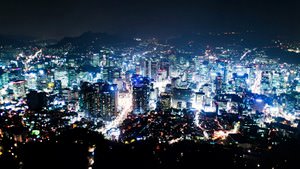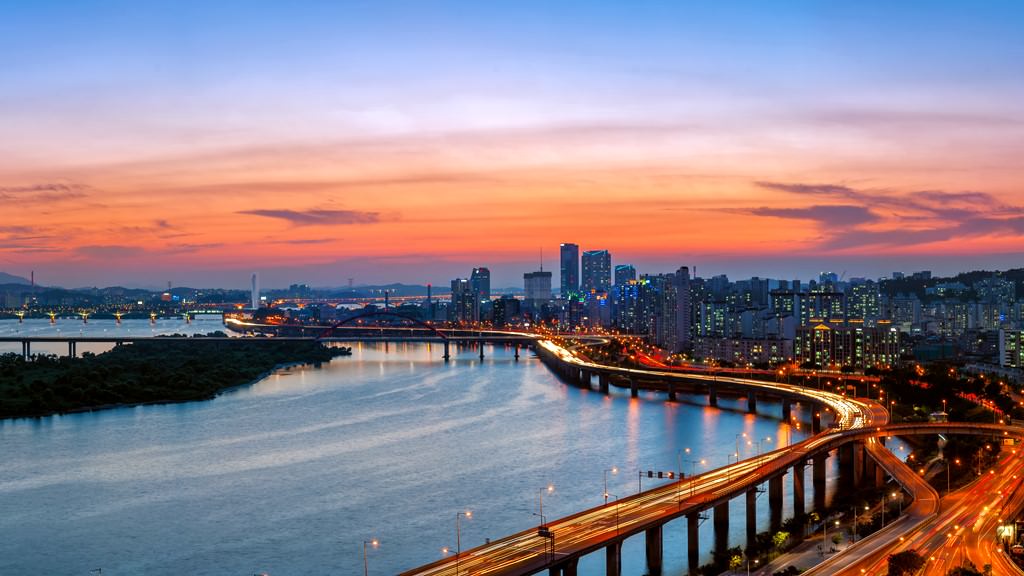Colors of Seoul - traditions, festivals, mentality and lifestyle
 You may be surprised to notice that almost all the Koreans around you are very light-skinned in Seoul, even in the height of summer. The secret is simple – a tan is considered a sign of low social status in South Korea. It is normally only for the working class. Local residents use any tool to combat sunburn. These are sunscreens, umbrellas on a hot day, and whitewash. You should not be surprised if you see a typical European woman instead of a model with a predictable Asian appearance on billboards. Light skin, light hair, and blue eyes are considered incredibly beautiful here. In general, everything American and European is highly valued here.
You may be surprised to notice that almost all the Koreans around you are very light-skinned in Seoul, even in the height of summer. The secret is simple – a tan is considered a sign of low social status in South Korea. It is normally only for the working class. Local residents use any tool to combat sunburn. These are sunscreens, umbrellas on a hot day, and whitewash. You should not be surprised if you see a typical European woman instead of a model with a predictable Asian appearance on billboards. Light skin, light hair, and blue eyes are considered incredibly beautiful here. In general, everything American and European is highly valued here.
Seoul is an amazing city with centuries’ old history. It is the most populated city and the capital of South Korea. According to historical records, a large town on the site of modern …  Open
Open
Seoul is an ideal place for families with children. There is everything that a child can wish for here. The variety of entertainment is very large - from amusement parks with attractions for …  Open
Open
 Industriousness of Koreans is a consequence of Confucianism. It is firmly rooted in the mentality of local residents. Almost a third part of Seoul's residents profess Christianity in one or another form. However, traditional teachings permeate the entire life of citizens at the same time. Local residents have great respect for their elders and for people with higher social status. For example, the last decision will always be for the oldest in the company of teenagers. The son is dependent on the father, the employee – on the boss, the schoolboy – on the teacher. This is an immutable truth. Younger children are not allowed to address their elders by name. They can only say "big brother/sister". An appeal to a supervisor or teacher always contains the word "mister". Seoul residents have a lot of respect for teachers. Only the head of the city can dismiss them from their position. Keep in mind giving up space in transport to an older person means pointing out his inferiority. The last three seats on the sides of the wagon are intended for old people in the subway. Seats at the door are destined for pregnant women.
Industriousness of Koreans is a consequence of Confucianism. It is firmly rooted in the mentality of local residents. Almost a third part of Seoul's residents profess Christianity in one or another form. However, traditional teachings permeate the entire life of citizens at the same time. Local residents have great respect for their elders and for people with higher social status. For example, the last decision will always be for the oldest in the company of teenagers. The son is dependent on the father, the employee – on the boss, the schoolboy – on the teacher. This is an immutable truth. Younger children are not allowed to address their elders by name. They can only say "big brother/sister". An appeal to a supervisor or teacher always contains the word "mister". Seoul residents have a lot of respect for teachers. Only the head of the city can dismiss them from their position. Keep in mind giving up space in transport to an older person means pointing out his inferiority. The last three seats on the sides of the wagon are intended for old people in the subway. Seats at the door are destined for pregnant women.
The first thing to note is that Koreans do not eat dog meat for breakfast, lunch, and dinner. Moreover, the modern generation has never tasted these animals. The last market that sold such …  Open
Open
 New Year is celebrated twice here. The first time residents celebrate the European New Year. They celebrate it quietly, modestly, and together with family members. The second time Seoul residents celebrate the New Year according to the lunar calendar. These are two weeks of festivities, carnival processions, and theatrical performances that penetrate all corners of Seoul. It is considered that both living and dead relatives gather at the table. Families exchange gifts. Younger members of the family congratulate their elders in the traditional manner. You can also get acquainted with the local culture during the Hanseong Baekje Cultural Festival. The Hi Seoul Festival is also interesting. It takes place throughout the city, introducing guests to the traditions and customs of Koreans. The Seoul Motor Show takes place in July. You can see and hear the Seoul International Fireworks Festival in the city in October.
New Year is celebrated twice here. The first time residents celebrate the European New Year. They celebrate it quietly, modestly, and together with family members. The second time Seoul residents celebrate the New Year according to the lunar calendar. These are two weeks of festivities, carnival processions, and theatrical performances that penetrate all corners of Seoul. It is considered that both living and dead relatives gather at the table. Families exchange gifts. Younger members of the family congratulate their elders in the traditional manner. You can also get acquainted with the local culture during the Hanseong Baekje Cultural Festival. The Hi Seoul Festival is also interesting. It takes place throughout the city, introducing guests to the traditions and customs of Koreans. The Seoul Motor Show takes place in July. You can see and hear the Seoul International Fireworks Festival in the city in October.
This guide to traditions and festivals in Seoul is protected by the copyright law. You can re-publish this content with mandatory attribution: direct and active hyperlink to www.orangesmile.com.
City tours, excursions and tickets in Seoul and surroundings
Reference information
Cathedrals and basilicas near Seoul
♥ Yakhyeon Church, Seoul 서울시, 3 km from the center. On the map Photo
Photo

♥ Shrine of Saenamteo, Seoul 서울시, 6 km from the center. On the map Photo
Photo

♥ Joeldusan National Shrine of Korean Martyrs, Seoul 서울시, 8.1 km from the center. On the map Photo
Photo

♥ Yakhyeon Church, Seoul 서울시, 3 km from the center. On the map
♥ Shrine of Saenamteo, Seoul 서울시, 6 km from the center. On the map
♥ Joeldusan National Shrine of Korean Martyrs, Seoul 서울시, 8.1 km from the center. On the map
Survived castles around Seoul
♥ Castle 'Acha Mountain Fortress' , 9.2 km from the center. On the map Photo
Photo

♥ Castle 'Namhansanseong' , 16.2 km from the center. On the map Photo
Photo

♥ Castle 'Suwoneub Fortress' , 31 km from the center. On the map Photo
Photo

♥ Castle 'Acha Mountain Fortress' , 9.2 km from the center. On the map
♥ Castle 'Namhansanseong' , 16.2 km from the center. On the map
♥ Castle 'Suwoneub Fortress' , 31 km from the center. On the map
National traditions of South Korea
 Take a closer look at your tourist brochure. Most probably, it has an image of the traditional wooden Hahoe masks. These Hahoe masks are an important cultural heritage of the country. They have a very long history. Originally made from alder, these masks were widely used in theatrical folk plays. Hahoe masks reflect different social groups and show emotions typical for every group. There are 12 major types of Hahoe masks: monk, butcher, bachelor, young girl, bride, widow, noble person, scientist, fool, servant, envier, and lion. It is a secret how masks of the servant, bachelor, and lion looked like in the past because they were lost.
… Open
Take a closer look at your tourist brochure. Most probably, it has an image of the traditional wooden Hahoe masks. These Hahoe masks are an important cultural heritage of the country. They have a very long history. Originally made from alder, these masks were widely used in theatrical folk plays. Hahoe masks reflect different social groups and show emotions typical for every group. There are 12 major types of Hahoe masks: monk, butcher, bachelor, young girl, bride, widow, noble person, scientist, fool, servant, envier, and lion. It is a secret how masks of the servant, bachelor, and lion looked like in the past because they were lost.
… Open
Hilton builds third luxury hotel in Kyoto
It will welcome its first guests in 2024. 313 rooms of various categories will be available, the interior of rooms and hotel spaces will become one of the main features of the high-class hotel. When decorating the rooms, it is planned to use local textiles, which are famous for their high quality and are considered to be one of the best in the world. Read this
Read this
27.07.2024
It will welcome its first guests in 2024. 313 rooms of various categories will be available, the interior of rooms and hotel spaces will become one of the main features of the high-class hotel. When decorating the rooms, it is planned to use local textiles, which are famous for their high quality and are considered to be one of the best in the world.
27.07.2024


 English
English Russian
Russian Dutch
Dutch German
German Spanish
Spanish French
French Türkçe
Türkçe













